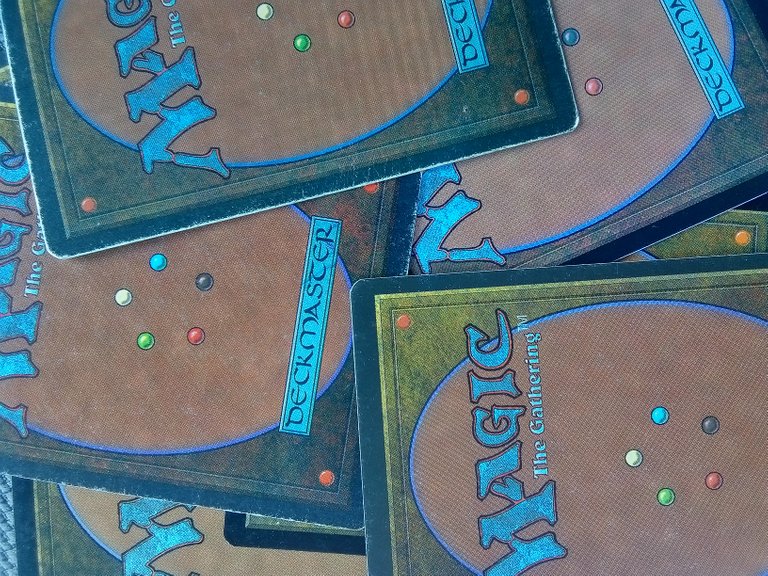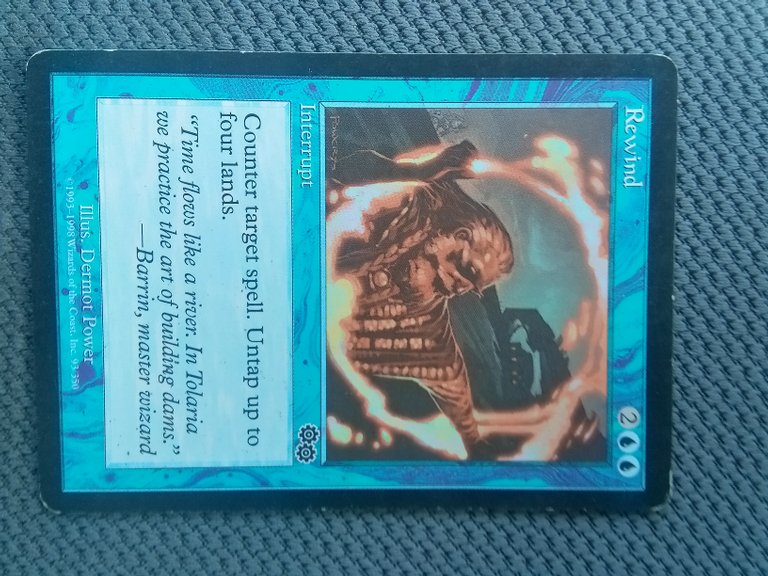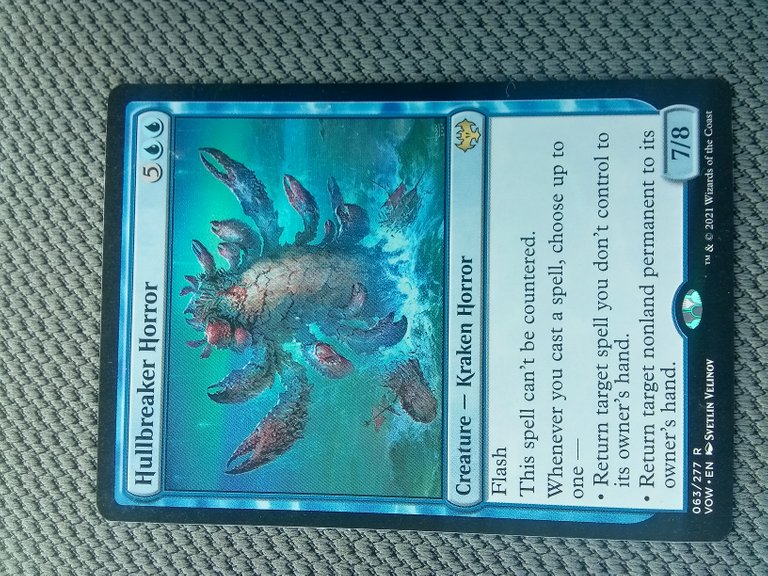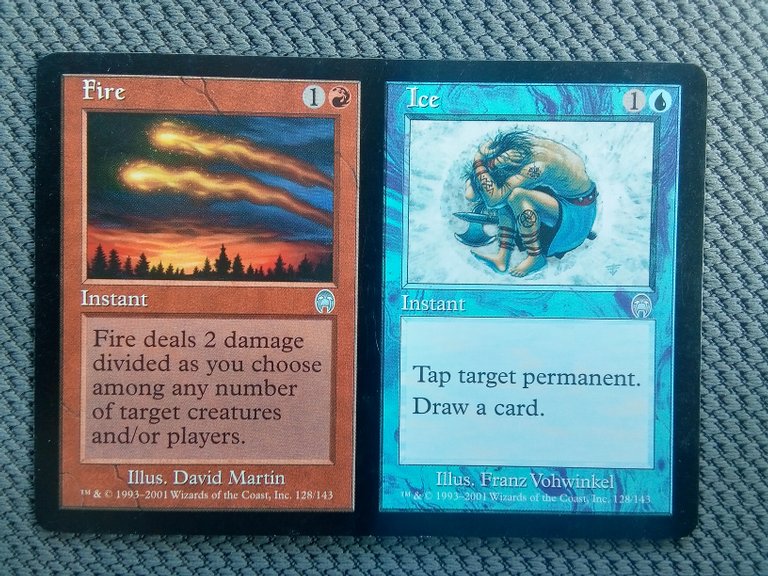
Tempo and card advantage in Magic the Gathering TCG- Tempo Strategy
Once again, thank you everybody for your support and your readership. All the images were photographed by myself and the credit goes to Wizards the Coast, a subsidiary of Hasbro 1993 to present. The artists are credited on the cards themselves.

All right everybody, let's jump back into it. Magic the Gathering is a game of tempo and strategy where wizards called "Planeswalkers" square off using spells to defeat each other. What does that mean in a broad sense? It's a game similar to chess, and you have to think ahead several turns and uncover patterns and card interactions to win. You have to keep a good advantage over your opponent in terms of permanents in play, cards in your hand and library (deck) and the speed or tempo in which this all plays out. As a Planeswalker, your goal is to outwit your opponent and understand how the game is unfolding to plan your next move.
Magic the Gathering- Tempo and Strategy
Tempo is roughly how you play from your deck during each turn. It's a careful dance, and when you design your deck you want to play test it because you don't want to get hand locked or run out of answers to your opponent's spells. What is being "hand locked"? Hand locked is where you draw only one card to turn after you've run through your hand and you're in danger of stagnating. In essence, your deck's tempo has been exhausted and only getting lands that are not improving your position. A big part of regulating your deck's tempo is understanding card advantage in general and in brief and we're going to go over that here. You don't want to be playing against an opponent who has fielded a finisher and has a hand full of counterspells while you draw basic land after basic land.

In the very beginning of the game, card advantage was something that became apparent as being very important. A lot of the cards that were widely used including Terror, Unsummon, Lightning Bolt and Counterspell were one offs that got you a one-for-one exchange of cards. Control decks use Counterspell, which manages to be an incredibly powerful answer to your opponent's threat, say a Shivan Dragon, but again you would trade one card in your in your hand for another of your opponents. Players quickly understood that cards like Jayemdae Tome and Disrupting Scepter could provide what was called card advantage. Every turn you could draw a card using a permanent on the battlefield while making your opponent lose a card if you had repeatable card draw and discard. So if you had the Disrupting Scepter and Jayemdae Tome, each turn you could draw one card and your opponent would lose one card that's putting you ahead by two cards. Your deck's tempo was then established and you could lock your opponent down while fueling your hand with answers. A finisher would eventually be drawn to win the game while your opponent was denied answers. This was termed "denial".
Improving Your Deck's Tempo
When you're building your deck, you want to make sure that you have ways to thin your deck using fetch lands and cards like Brainstorm and various other cheap cards that will allow you to draw into your deck. You don't want to get hand locked, and you want cards that will help you find answers like Swords to Plowshares and Counterspell. If you're playing the game and you draw- let's say a late game fetch land or a late game Brainstorm, you can use that to your advantage to thin your deck and find solutions to problems on the field. If you're playing a control deck or an aggressive deck you're going to need to stay ahead of the dreaded hand-lock condition. Adding 8-fetch lands to your deck will essentially reduce your deck size to 52-cards and will improve your tempo. Being able to roll out if hand lock is key, and is often a consideration in aggressive decks. Aggressive decks can use fetch lands and repeatable sources of damage includinf creature armies to keep the pressure on an opponent.

Breaking your opponent's tempo through consistent card advantage is something that is going to pay dividends throughout the game. A great example of this is the Oath of Druids deck or the Ophidian decks played in the late 1990s. I played both decks, if you could get out and a an Ophidian and a Forbid, you could counter every single one of your opponents spells from about turn five on. You then use cards that bounced permanents back to your opponent's hand including Tradewind Rider to gain advantage and you could win the game. Likewise, in the Oath of Druids deck, which had a similar strategy of countering spells and destroying permanents that were offending and dropping one huge finisher, card advantage was key. We thinned our decks with fetch lands and Thawing Glaciers and we made sure that we had utility creatures that could gain us advantage as well. Cards including Winter Orb and Icy Manipulator also help break your opponent's tempo, as their lands and finishers will not untap, and they will have to wait. Anything unexpected that hinders your opponent's resource usage will break their tempo. The famous Stasis deck that fully removed the untap step is a great example of a fracturing of your opponent's tempo.
Utility creatures are so key for card advantage, and they debuted in Mirage and Visions. There are many utility creatures including Uktabi Orangutan and Nekrataal that came into play and they would destroy a permanent as they entered the battlefield, so you would get a card and your opponent will lose one. In essence these cards put you a card advantage of one just by entering the game. They were also important as repeatable sources of damage. Other cards functioned as permanent destruction or a permanent that would actually draw you cards or make your opponents discard cards like Hypnotic Specter or Ophidian. A player who utilizes these types of permanents can gain card advantage and thus tempo advantage as well. If you're playing out cards and solutions from your deck that's going to put you in a solution advantage.
What are some more concrete examples I can give you regarding tempo advantage? Well it's really important when you are play testing to see what happens if you do get hand locked. Try playing 10-games and notice what happens about turn six when you start to run low on cards. If you don't or if you have a way to continuously draw cards, if your opponent is coming up short on answers to your threats, if you're bouncing or destroying permanents actively then your deck has good tempo. If you don't if you're running out of cardsand if you're losing card advantage make sure you adjust your lands add in fetch lands like Wooded Foothills and Thawing Glaciers so you can thin out your deck and adjust your lands you may have too many or you may have too few. Look at your land count and check on any card draw or search you can employ.

In the olden golden days we used a card called Capsize. It was a repeatable bounce card that would be able to return one permanent to your opponent's hand for six mana. We used this in the late game to gain tempo advantage, especially if our opponents have played out a really strong creature since it came back to our hand. We could rely upon it and eventually we drew a Counterspell we could use to kill that creature off and win with a finisher of our own. This is an example of disrupting your opponent's tempo, if they want to play a small repeatable creature or even a large one you want to make sure you have a way to counter that. Breaking your opponent's tempo comes in many forms including permanent disruption, bounce, counter spells, and card advantage. When you build your deck, pay attention to the flow and efficiency of your gameplay to improve your tempo.
Posted on Hive, Blurt and Steemit. Posted under truth2 on Steemit.

